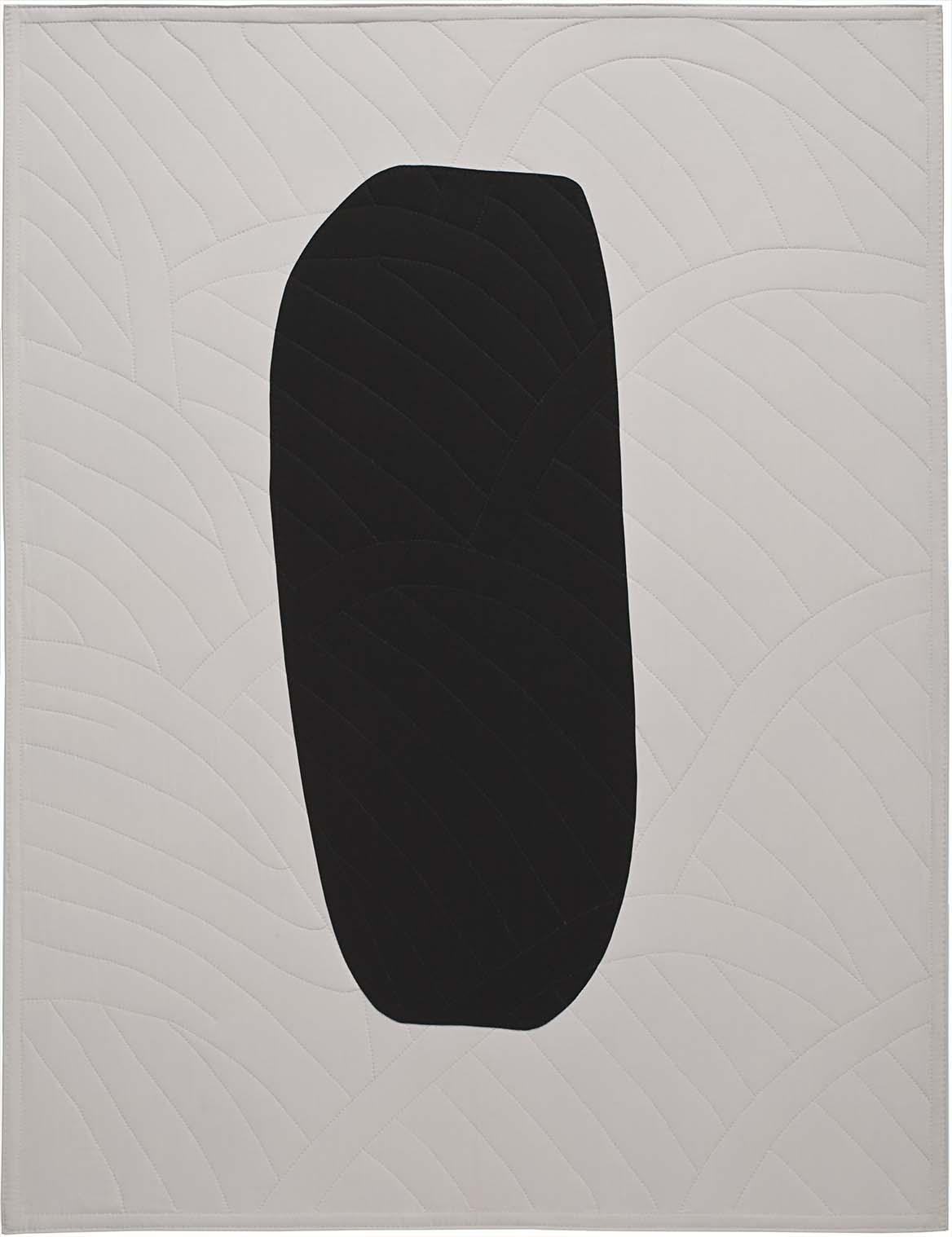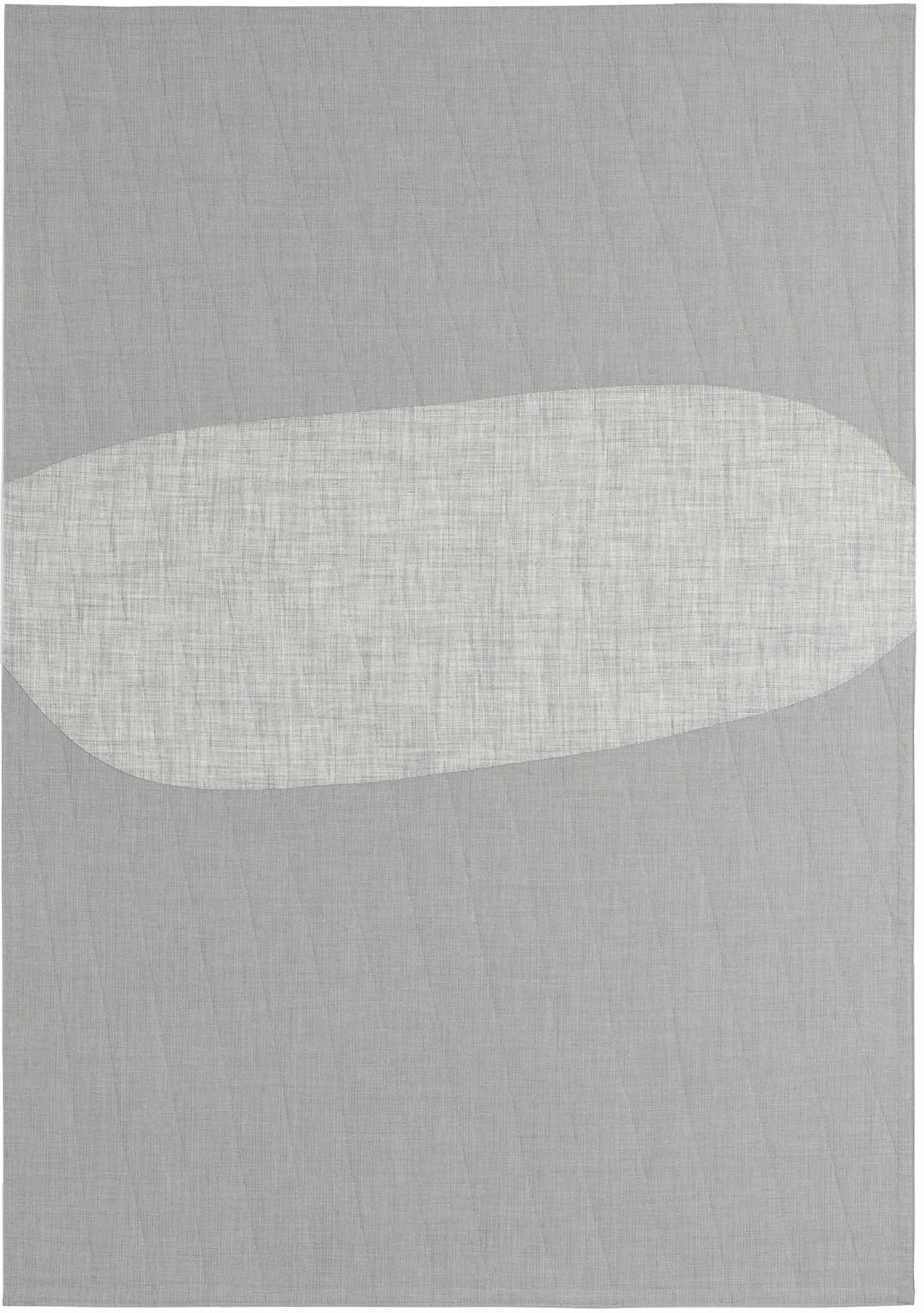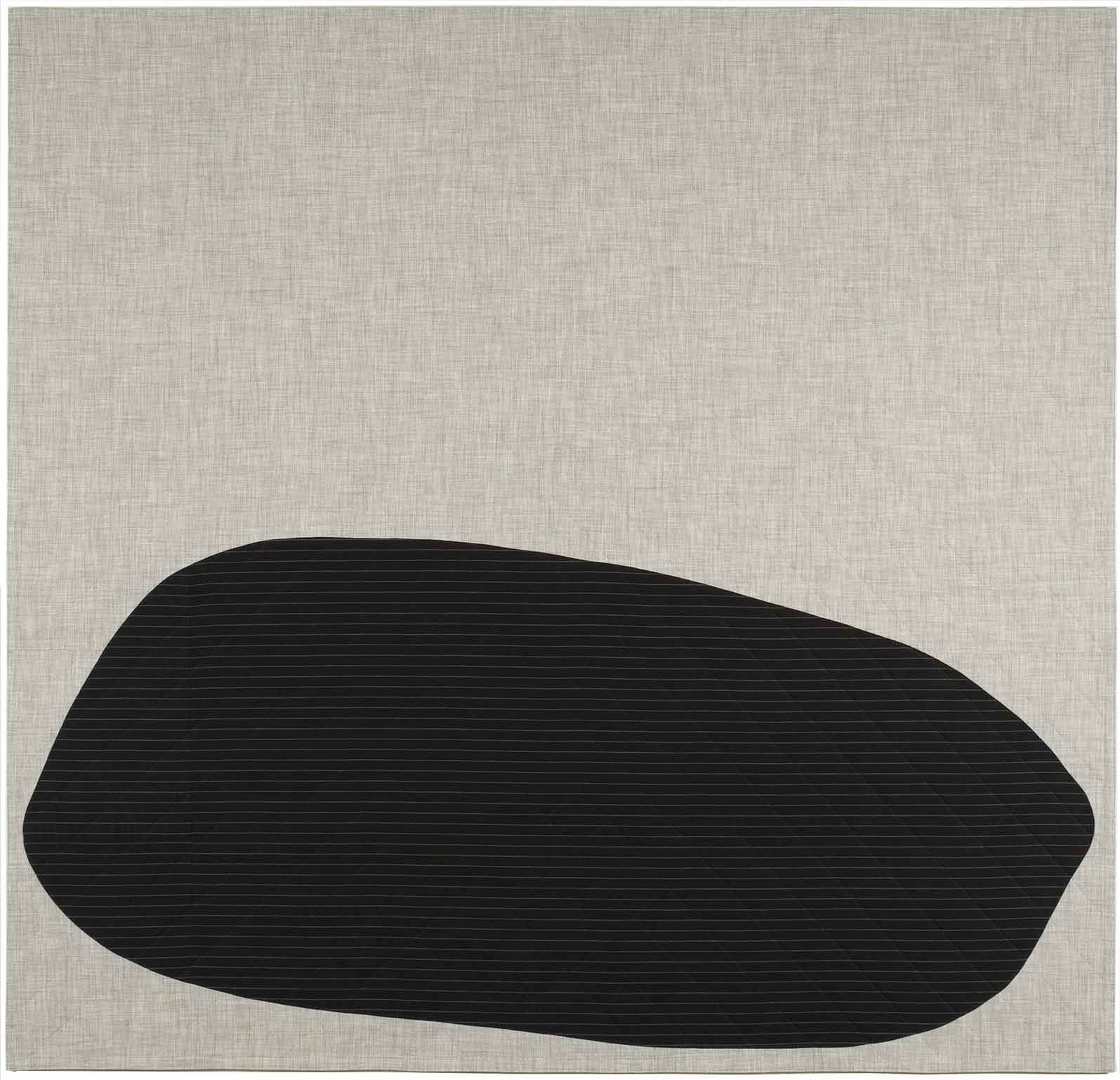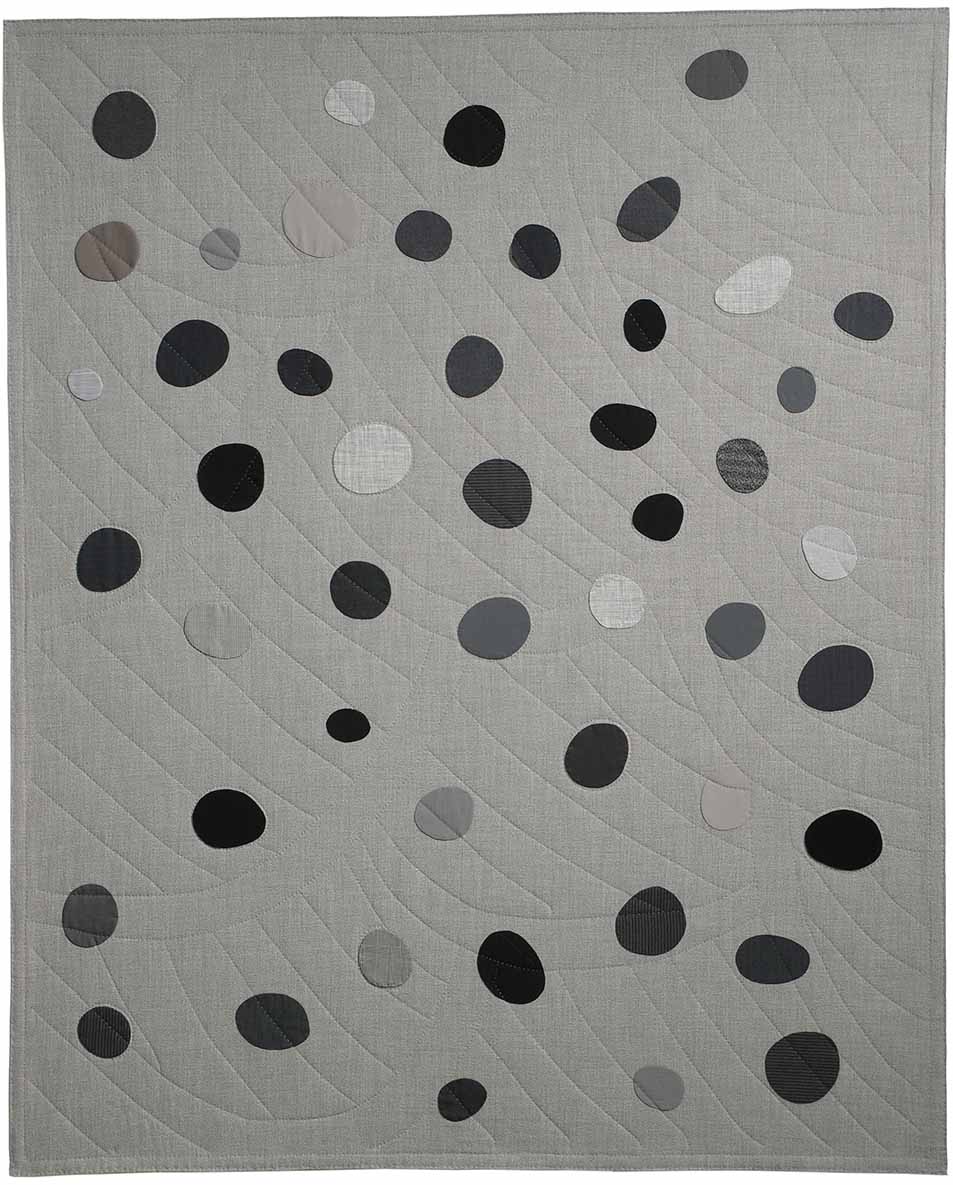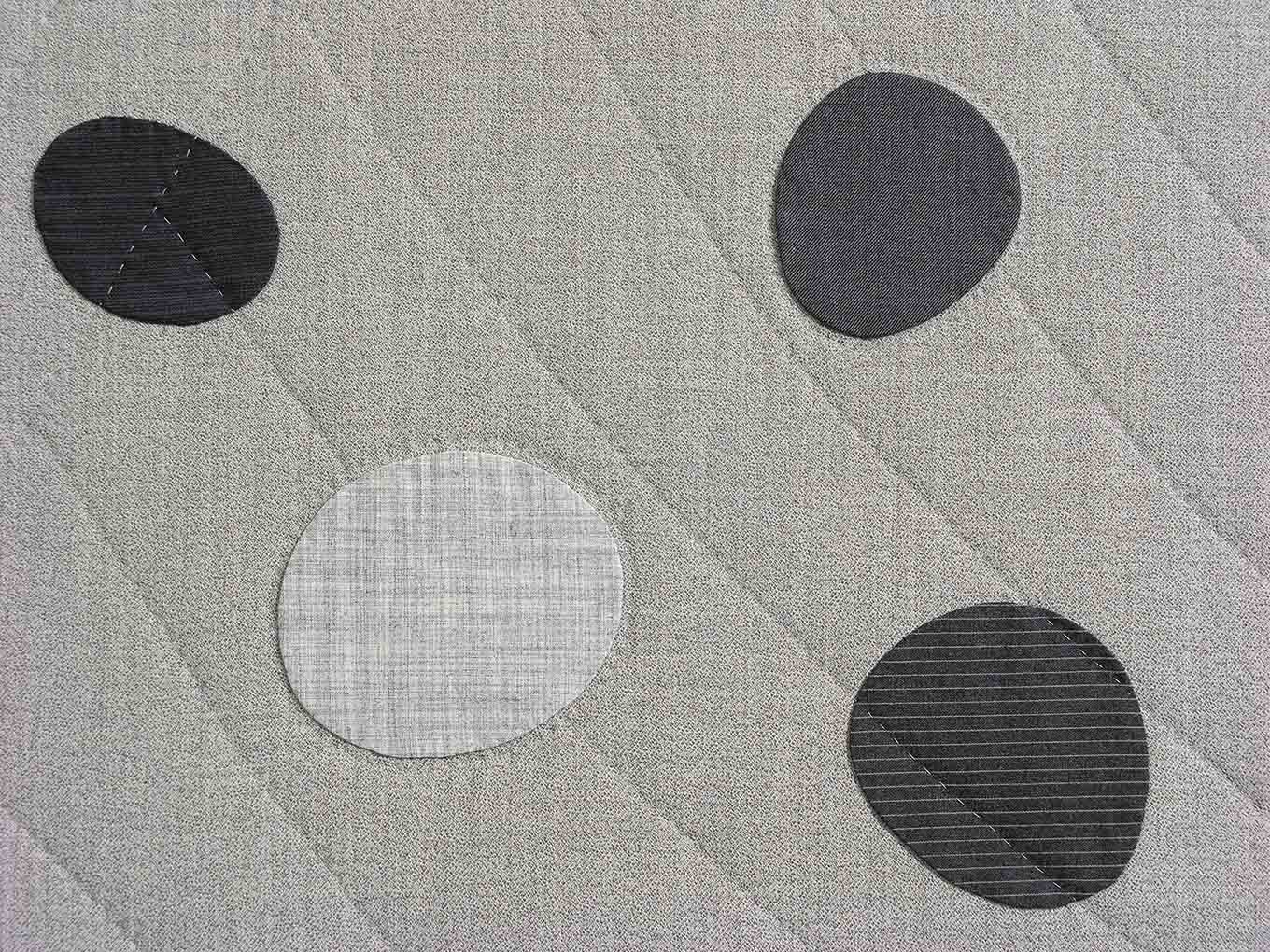Stone Days – Quilts | 2005 - 2012
The quilts in Stone Days are spare, and because of this it is easy to see how the lines of quilting and the fabric shapes interact with one another. A quilt is fundamentally a layered textile sandwich. The top is what one sees, and where the imagery or pattern is most visible, the middle is the padding or stuffing, and the bottom is the backing. This sandwich is held together by lines of stitching called "quilting." This simple recipe has been used by quilters, in so many different ways, to layer imagery and to make meaning in their work.
The quilting part can be purely functional but, in many cases, the stitching contributes to the overall design. This is tricky, because it is not the color contrast of the quilting thread against the background fabric that creates the lines, but the subtle relief created by the indent of the stitched lines. In the case of a quilt-top of all one color, the effects of the relief provide the only imagery. In a multicolored patchwork quilt, depending on the degree of contrast and complexity of the piecing, the quilting can almost disappear, overpowered by the fabrics used.
The same can be true of complex appliqué quilts. However, there are many instances where the quilting and the fabric composition strike a balance, each playing its part in the overall design. I count myself lucky when I can use the quilting lines not only to provide a counterpoint to the pieced or appliqué imagery, but to contribute a layer of meaning to a work.
The appliqué shapes in Stone Quilt suggest pebbles on a shoreline, while the swooped lines of stitching allude to the patterns left by waves retreating from a sandy beach. The “hills” of Standing Stone in Rolling Hills are the quilting lines from Stone Quilt, turned upside down.
The title and quilting lines for Il pleut (It’s raining) were prompted by a concrete poem by Guillaume Apollinaire of the same name. In Apollinaire’s poem the lines of text are arranged in vertical diagonals across the page, like a rain shower. However, layering of meaning and motif doesn’t always work. In that case, I keep the quilting lines as simple as possible. This was the approach I took with . . . all your troubles fall away, and Four Corners of the World.
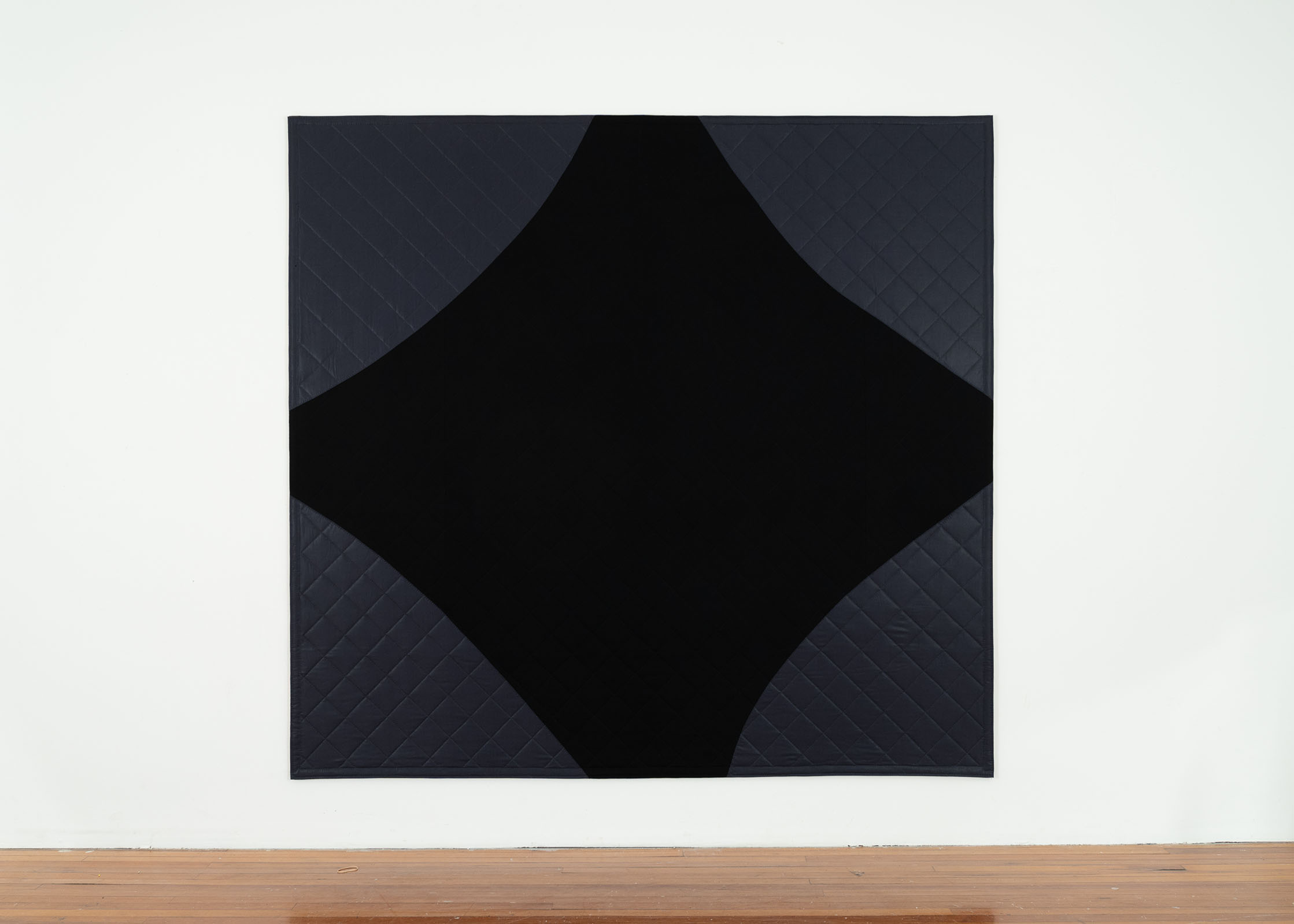 Four Corners of the World, (installation view) 2011
Four Corners of the World, (installation view) 2011
wool, (pieced and hand quilted)
231 x 246 cm (91 x 97”)
